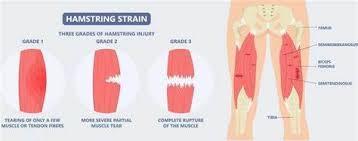
1. Pelvic Stability: The Foundation for Injury Prevention
One of the biggest culprits behind hamstring pain is anterior pelvic tilt. This misalignment overstretches the hamstrings, especially in sprinters, making them more vulnerable to strains. If your pelvis isn’t stable, your hamstrings are constantly working overtime to compensate. The solution? Strengthen and balance your pelvic region to prevent excessive tension and strain.
2. Core Strength & Proper Breathing: A Strong Foundation
A weak core is a major contributor to pelvic instability. When your core isn’t engaged properly, your hamstrings take on more work than they should. Focusing on lower core activation and proper breathing techniques helps create a strong foundation for your pelvis, alleviating tension in the hamstrings and promoting overall stability.
3. Progressive Hamstring Loading: Strengthening for Resilience
One of the most commonly strained muscles in the hamstring group is the biceps femoris, and weakness in surrounding muscles or poor pelvic alignment can cause it to overwork. To prevent this, gradual strengthening and progressive loading of the hamstrings is essential. Addressing imbalances and strengthening supporting muscles will help you recover fully and prevent future injuries.
The Big Picture
Hamstring health isn’t just about the hamstrings—it’s about creating a strong, well-supported system of muscles. Strengthening your glutes, abs, and adductors alongside your hamstrings ensures long-term resilience and injury prevention.
If you’ve been dealing with hamstring pain and need guidance, don’t hesitate to reach out. I’m here to help you move better, feel better, and get back to doing what you love. Watch the full video to learn more about tackling hamstring pain the right way!





